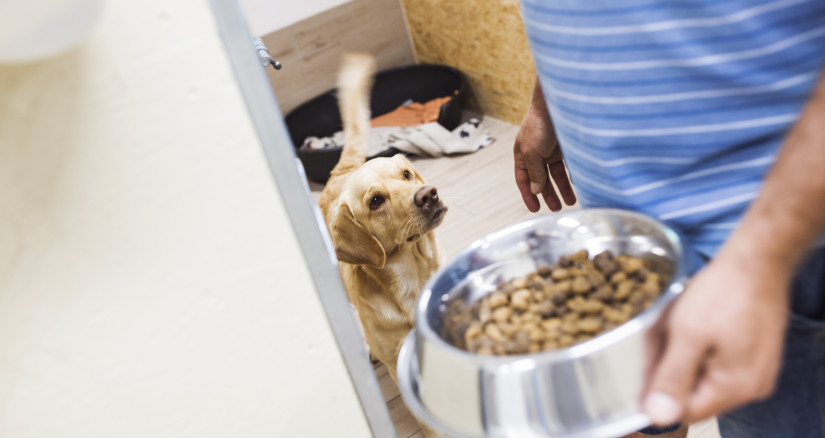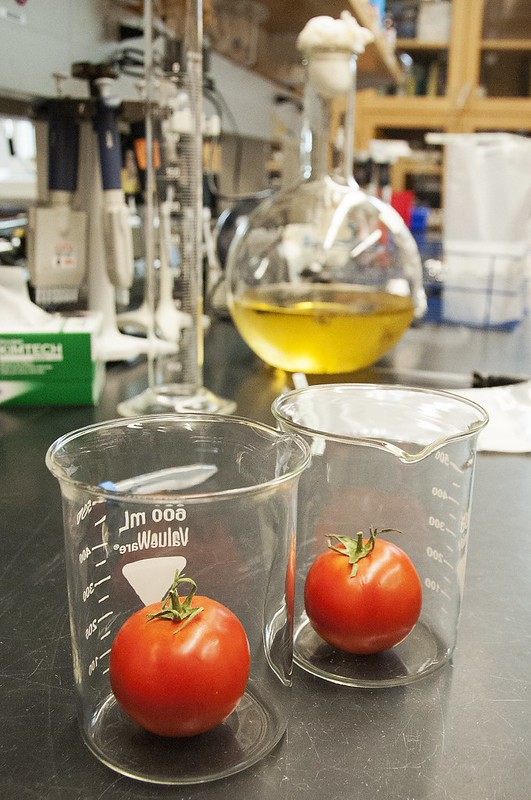
Regulatory Whiplash: Pet Food Centralizes, Human Food Fragments
For the decade I’ve worked in the feed and pet food industry, it has always followed a predictable pattern. Human food sets the standards, and pet food follows them. Safety, labeling, and innovation trickle down from the supermarket aisles to your dog’s bag of kibble. Lately, it seems that the script is flipping for pet food.
In statehouses across the country, lawmakers are redefining “safe” food, banning food colorants, preservatives, and other additives that federal regulators have already deemed safe for use in human food. Many states are crafting their own rules, each redrawing the boundaries of consumer protection and creating a patchwork of policies that are shaking up the food industry.
On the flip side, the pet food industry is no longer a regulatory follower. Quite the contrary, actually. Since 2024, a few state legislators and industry groups have been pushing for federal unification of the pet food industry under H.R. 597, the “Pet Food Uniform Regulatory Reform Act of 2025” or PURR Act of 2025, for short. Many leaders are calling for national consistency, but that doesn’t have to mean federal control. At a time when human food is fragmenting under political pressure, the pet food industry has a rare opportunity to model smarter collaboration, harmonizing standards while keeping oversight close to the consumers and communities it serves.

Photo by Fasci
The Fragmentation of Human Food Regulation
In the last couple of years, the human food industry has experienced an unmistakable trend of state governments taking food safety into their own hands. What began as isolated instances in a few states has become a full-blown national trend under the “Make America Healthy Again” movement designed and implemented by the current administration. Concerns over the potential link between certain food additives and health implications largely drive these new bills. While they may be well-meaning, state legislators are making the food industry a minefield that complicates nationwide compliance for food manufacturers.
The California Food Safety Act (A.B. 418), enacted in October 2023, started it all. This bill prohibits the manufacture, distribution, and sale of foods and beverages in California that contain four specific additives: brominated vegetable oil (BVO), potassium bromate, propylparaben, and common food dye Red No. 3. If you’re thinking, “Oh, only four, not bad!,” you might be underestimating the sheer number of food products that require reformulation to comply with this new regulation. Some manufacturers have gotten a head start, like Just Born, which has removed the red colorant from the popular Easter candy, Peeps. However, industry analyses estimate that thousands of products may eventually need reformulation if they contain any of the four banned additives.
The California bill sparked many additional state and some federal regulations on food additives. As of July 2024, the US Food and Drug Administration (FDA) no longer allows the use of BVO in food and beverages, nor does it allow Red No. 3, which had its authorization revoked federally in January 2025. In March 2025, West Virginia became the first state to ban the use of seven of the nine synthetic food dyes available, as well as propylparaben and butylated hydroxyanisole (BHA), in all food and beverages sold in the state via H.B. 2354.
The ripple effects in West Virginia have been immediate, with food producers and unions warning that roughly half of the state’s food and beverage inventory could vanish, driving up grocery prices and leaving shelves bare as companies rush to reformulate. According to opposing lawmakers, the law could cost the state tens of millions in lost sales and jobs. Even well-intentioned legislation can disrupt entire supply chains almost overnight.
California and West Virginia certainly aren’t alone in their efforts. According to a recent review, as of March 2025, lawmakers in about 20 states had introduced nearly 40 bills to restrict dyes and other food additives. Illinois advanced a bill (S.B. 93) to prohibit BVO, potassium bromate, propylparaben, and Red No. 3. Florida introduced S.B. 560 to ban nine food additives, including BVO, potassium bromate, propylparaben, Blue No. 1, Yellow No. 5, BHA, and butylated hydroxytoluene (BHT). Pennsylvania introduced bills H.B. 2116 and H.B. 2117 to ban additives like Red Nos. 3 and 40, Yellow Nos. 5 and 6, and BVO. Oklahoma joined the conversation with one of the broadest proposals yet: S.B. 4, a bill seeking to ban 21 food additives and colorants, including common ingredients such as aspartame, sodium benzoate, sodium nitrate, and titanium dioxide. You can pry the aspartame-riddled Diet Coke out of my cold, dead hands, Oklahoma.
Taken together, these initiatives paint a clear picture of a food system struggling to accommodate good intentions. At their core, these bills aim to protect consumers from ingredients perceived as harmful, such as artificial dyes, preservatives, or additives that have long sparked debate over potential health effects. The challenge lies in disagreement over what constitutes “harmful” and how much risk is acceptable.
Each bill may aim to protect consumers, but collectively they’re creating a hodgepodge of standards that even the most sophisticated manufacturers struggle to navigate. A cookie sold in California may need a different formulation in Florida or Oklahoma, and the same product could face multiple reformulations before it ever reaches national shelves.
Those added complexities don’t just challenge manufacturers. They drive up costs, limit distribution, and ultimately land on the consumer’s receipt. Shoppers could start noticing higher prices, fewer familiar products, or even beloved brands disappearing from shelves in certain states as companies choose to reformulate selectively or exit restrictive markets altogether. Ironically, while human food regulation breaks into 50 versions of safe, the pet food industry is pursuing a very different path that seeks to federally unify standards.

Photo courtesy of US Food and Drug Administration
The Centralization of Pet Food Regulation
Historically, pet food has followed the lead of the human food industry, evolving in step with broader human food trends and regulations while being co-regulated at the state and federal levels. The Food Safety Modernization Act (FSMA) of 2011 took a giant leap forward in cementing the connection by extending food safety requirements to animal food for the first time, holding pet food manufacturers to the same rigorous standards as human food. From there, initiatives like Pet Food Label Modernization (PFLM), started in 2015, built on that foundation, introducing new labeling standards for pet food much like the nutrition facts panel for human food. While the intent was to simplify and modernize, implementation has revealed challenges, from differing state adoption timelines to labeling interpretations that sometimes confuse more than clarify. Even so, PFLM marked a turning point in aligning pet food oversight with human food principles, setting the stage for the debates shaping regulation today.
Fast forward to now: unlike efforts in human food, the PURR Act aims to centralize the regulation of pet food under the FDA. Today, state feed programs serve as the first line of defense by inspecting products and labels to ensure that marketing claims are accurate and supported by evidence, thus protecting consumers from misleading or mislabeled pet food products. The PURR Act would prevent state regulators from providing that first level of oversight to the pet food industry, transferring all responsibility for regulating pet food to the FDA. While its advocates argue this would streamline compliance, the reality is far more complex.

Photo by Chalabala
Planning for Progress
If both industries share the goal of producing safe food for us and our pets, why do their approaches differ so drastically?
One could conclude that human food legislation is the product of the current political climate and increasing consumer anxiety. Legislators are rushing to outlaw ingredients perceived by the public, whether correctly or incorrectly, as risky before federal agencies can make informed decisions based on their long-term review processes. In contrast, proponents of the PURR Act are responding to the same uncertainty by seeking blanket federal oversight, hoping that centralized authority will simplify compliance for brands and manufacturers.
Both strategies are symptoms of the same problem: reacting to pressure rather than planning for progress. When decisions are made to quiet the loudest voices rather than strengthen the smartest systems, innovation stalls, costs rise, public trust erodes, and the whole industry suffers.
As human food fractures under the weight of politics and pet food risks losing its local expertise to the FDA (if there’s even anyone left in the office to take it…), it’s clear that a balance is necessary in both industries to ensure we can keep producing safe food for pets and people. Our industry has the opportunity to lead the way on a collaborative path that unites around our shared principles without sacrificing valuable state-level expertise. We all want what is best for pets, and we’re better together than as individuals. Why not take advantage of that synergy to collaborate for a better future?
The goal isn’t more regulation. It’s smarter regulation grounded in science, guided by accountability, and strengthened through partnership. True progress comes when the industry leads with evidence, not emotion, and builds systems that are proactive rather than reactive. Instead of waiting for blanket rulings from Washington, we should be asking how our sector can set its own unified, science-based standards that protect pets and empower innovation. At BSM Partners, we believe that kind of self-governance, driven by collaboration between regulators, manufacturers, and scientists, is how we ensure every bag, bowl, and bite reflects the integrity of an industry that’s not just keeping pace with human food, but leading it.
Follow us on LinkedIn for the latest updates on all things happening here at BSM Partners.
About the Author
Neeley Bowden is a Manager of Special Services on the BSM Partners Product Innovation team. She earned her bachelor's degree in pet food production and her master's in food science. In her early career, she worked in product innovation of pet food ingredients, focusing on the development of palatability enhancers. Bowden calls her horse farm in South Carolina home, along with her faithful canine, Allie.
This content is the property of BSM Partners. Reproduction or retransmission or repurposing of any portion of this content is expressly prohibited without the approval of BSM Partners and is governed by the terms and conditions explained here.